Types of twine in the gym
For each professional dancer or skater's ability to sit down on the string - an indicator of the high level of skill. This skill is required for admission to the competition world-wide, as well as to reach the professional stage. A lot of famous people, such as the brilliant Felix Cane, "steel", Jean-Claude Van Damme or domestic star Anastasia Volochkova, excite the imagination of millions of its flexibility, which can not be imagined without making twine.
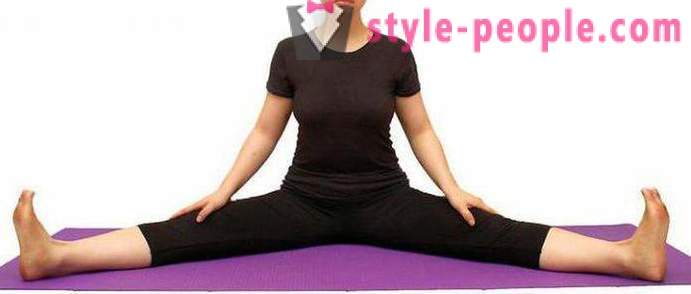
Features of the
But for mere mortals development of one of the types of string - is, above all, a victory over the other, the ability to control your body, and the "secret", which gives strength and confidence. Twine has some difficulties in development. The main constraints that impede the implementation of twine - a lack of natural ability, low flexibility. The main difficulty lies in the fact that many are willing to do the splits to train hard enough in a monotone mode. Unlike other types of training, exercise the splits different sequence, and a person has for a long time to deal with the pain, learn to bear her. But it should be noted that the most acute pain occur only at the beginning of the workout. Over time, they become less noticeable.
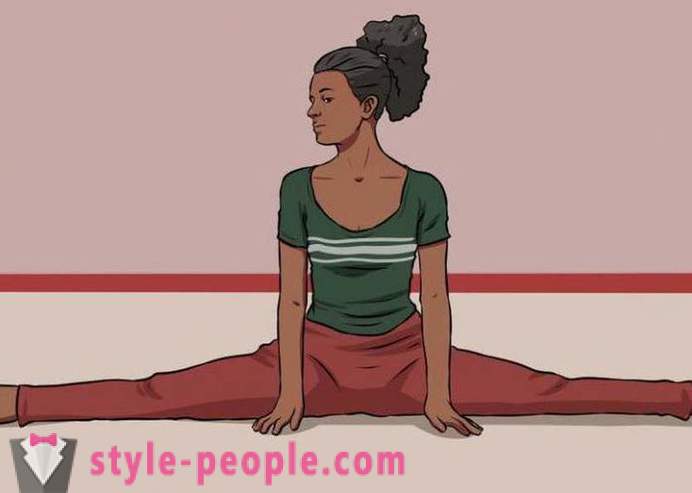
Transverse twine
One of the simplest kinds of twine - a cross. When this acrobatic element legs are oppositely directed to form a maximum angle - 180 to. It is believed that not every citizen of the world can boast of this exercise. About 15% of the population can not perform this type of twine because of the structural features of the femur. Also, this exercise gives women much harder than men, due to the different structure of muscles. It represents the greatest challenge for fitness fans, because the human legs are arranged so that they can not be moved apart in a larger range than 90-110 degrees. Transverse twine has another name - "male".
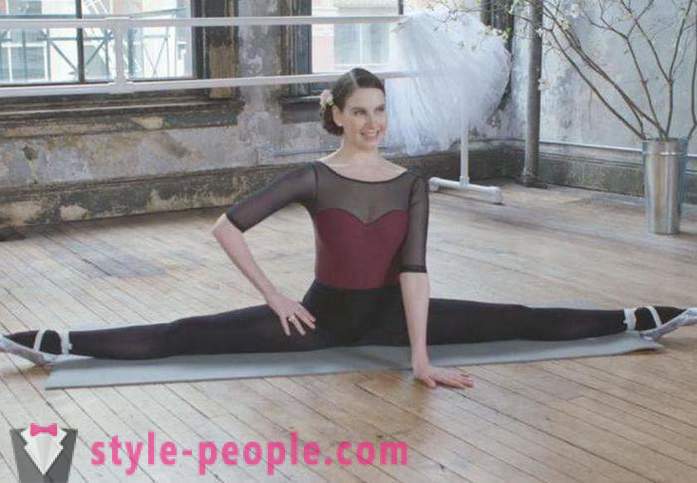
Species cross twine
To master this type of twine, it is necessary to develop vyvorotnost legs - the ability to deploy them outwards. This quality allows the hip abduction large amplitude - in other words, the maximum freedom of movement is achieved in the lower body. This concept is one of the most important in the choreography where vyvorotnost present in the five basic positions of classical dance. All other movements are derived from the basic steps. Rhythmic gymnastics, unlike sports, by their nature more vyvorotna. Therefore, to distinguish between different types of cross-twine. The gymnastics and choreographed knees will be directed upwards. In sports knees also directed upwards, but the ends of the thumb should reach the floor.
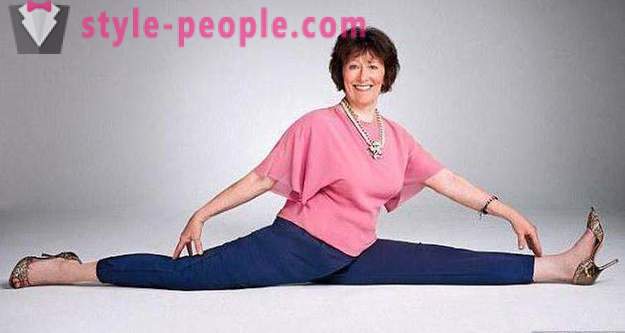
longitudinal splits
The next type of twine, which enjoys great popularity - it is longitudinal. In the process of performing one foot should be located in front of the housing, and the second located at the rear. You need to straighten your legs in a straight line, which is perpendicular to the body. This type of string is divided into two categories - the right-sided and left-sided. Traditionally, this type of string is more accessible beautiful half of humanity. The reason also lies in the anatomy. Men hamstring stronger than women. It is very difficult to give in to relax and prevents the implementation of this type of string.
longitudinal twine types
Acrobatic active element can be configured differently. Share the following types of longitudinal twine:
- Sport (or gymnastic). If it is satisfied the back foot heel should be oriented straight up. feet should be stretched, and the little finger of the front legs is directed to the floor. This type of string is most common in gymnastics.
- Ballet (dance). The back foot should be in a position vyvorotnom knee looks to the side and toes pointed. This type is most popular in the ballet and some types of dance.
- "Hanumasana" ( "the king of the monkeys pose"). Twine with this unusual name came to us from yoga. During its execution, the knee should look at the floor and the heel - straight up. Foot front legs should be pulled over.
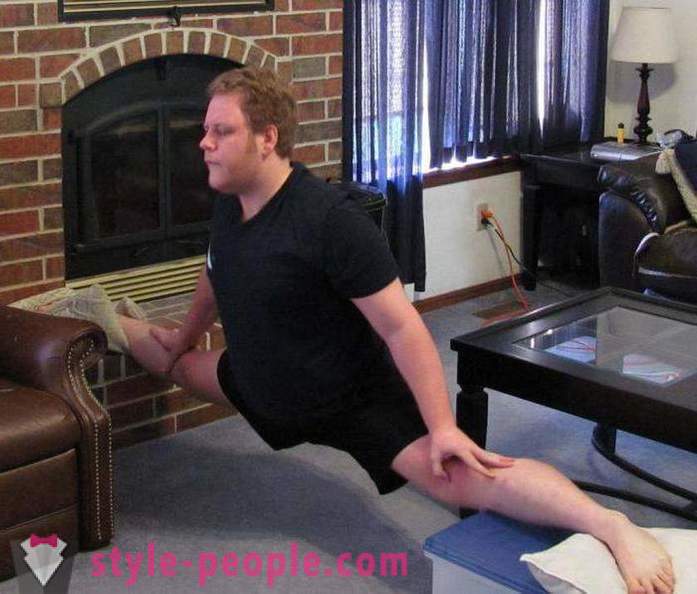
Provisnoy twine
This type is a longitudinal variations. Otherwise, it is called a "negative" or "royal". This kind of twine name speaks for itself. To carry it out, it is necessary to possess flexibility prohibitive, because the angle between the legs in the performance will exceed 180 degrees. In order to achieve provisnogo twine, takes a long time to train, and first master other types - longitudinal and transverse.
Other types of string
One of the difficult kinds of twine in the gym is vertical. He performed in a standing position with support on one leg. It can also be used as a bar or a vertical wall support. Often gymnastics performed and an element such as a twine on hands. It requires a fairly high level of physical fitness - hands must be trained, plasticity - high. From acrobat also requires the ability to keep the balance. Dynamic type - one of the most unusual kinds of twine. Photo gymnasts or dancers performing this exercise is always a delight and admiration. Twine is performed in the air with the help of the run, and sometimes from the spot. Often, the exercise element is martial arts, where it is achieved by means of leg swing.
Lying on the floor
What types of twine than those listed? Among those who are fond of gymnastics is popular is another type - lying on the floor. In the process, the housing is entirely in contact with the support surface. Most often, in order to carry out this exercise, you need to lie on your back. In this case, the legs can be moved apart (performed cross-twine) or one foot must be tightened to the body and fixed arms (arm).
Polushpagat
Often to a single type of rank polushpagat. However, among the experts still is debate whether to consider its individual acrobatic element or a full kind of twine. For its implementation need to sit on the floor, one foot retract and the second bend and as close as possible to bring to the groin. Sit on polushpagat almost painless, so it is often recommended to beginners.
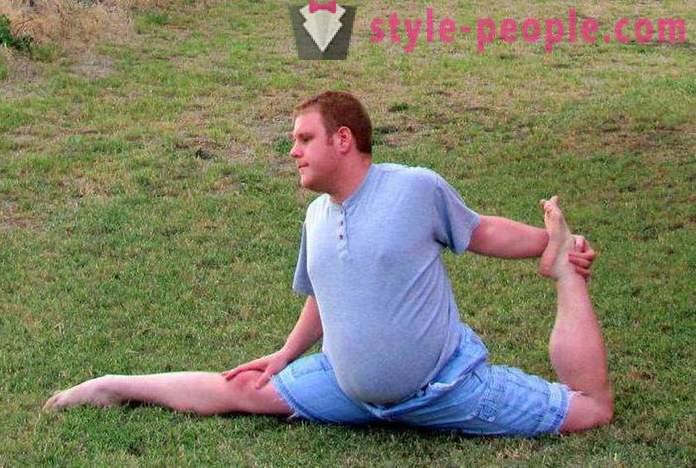
Precautions
During stretching exercises need to be very careful - especially when any of the others trying to "help". After all, no one but the person may not be aware of the state of its muscles. All exercises for the development of twine, as well as the development vyvorotnosti, need to go strictly under the supervision of a professional trainer. Acrobatic elements must be performed only after the warm-up carried out, and the body warmed. Otherwise, a high risk of injury. It is also worth remembering about relaxing - mostly stretching aspect. In order to do the splits, you need to constantly perform painful exercises. The body resists unpleasant sensations, muscles tense. The splits become more difficult and increases the risk of injury. For their prevention should always make sure that the muscles were more relaxed as possible.













































